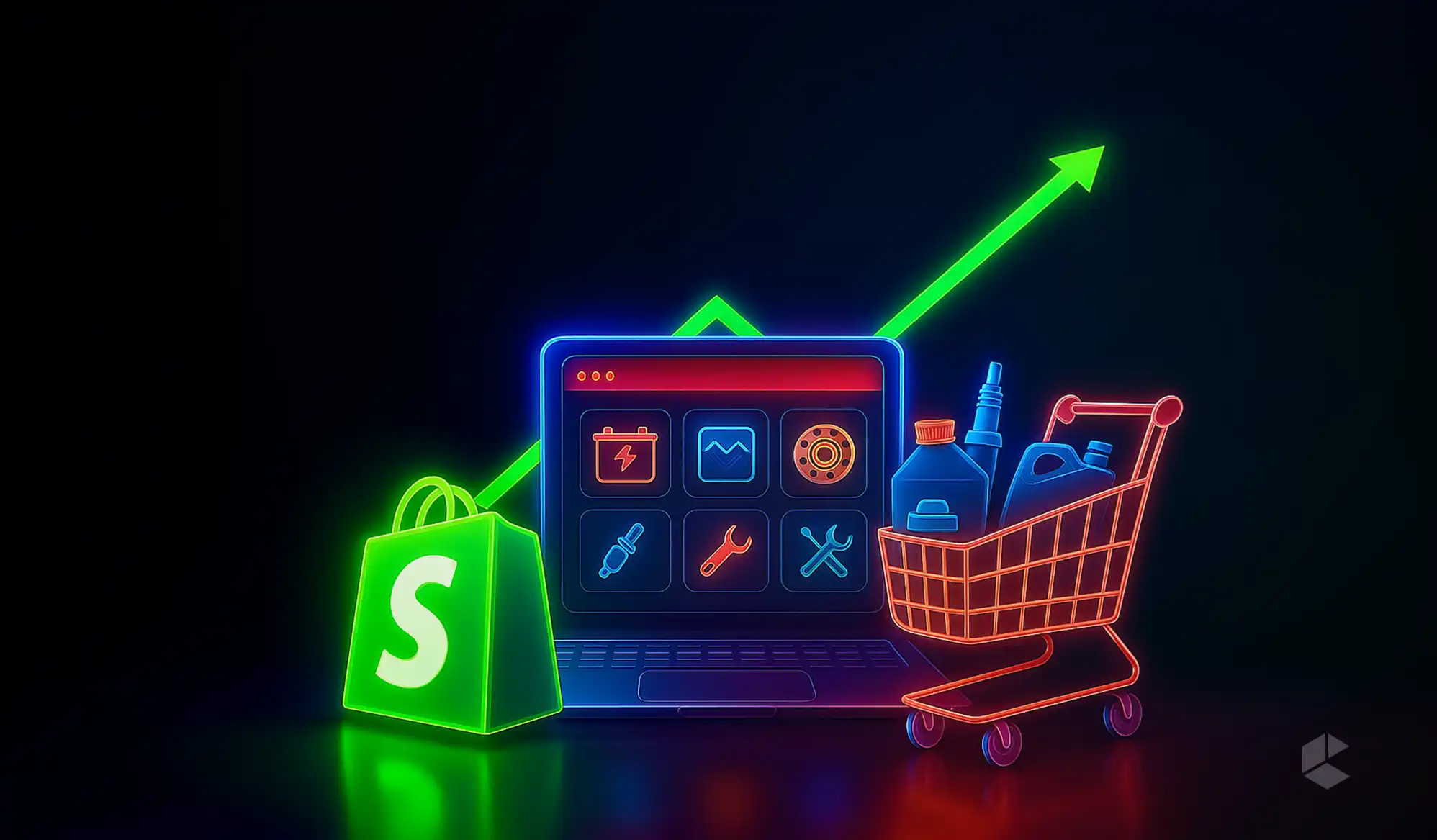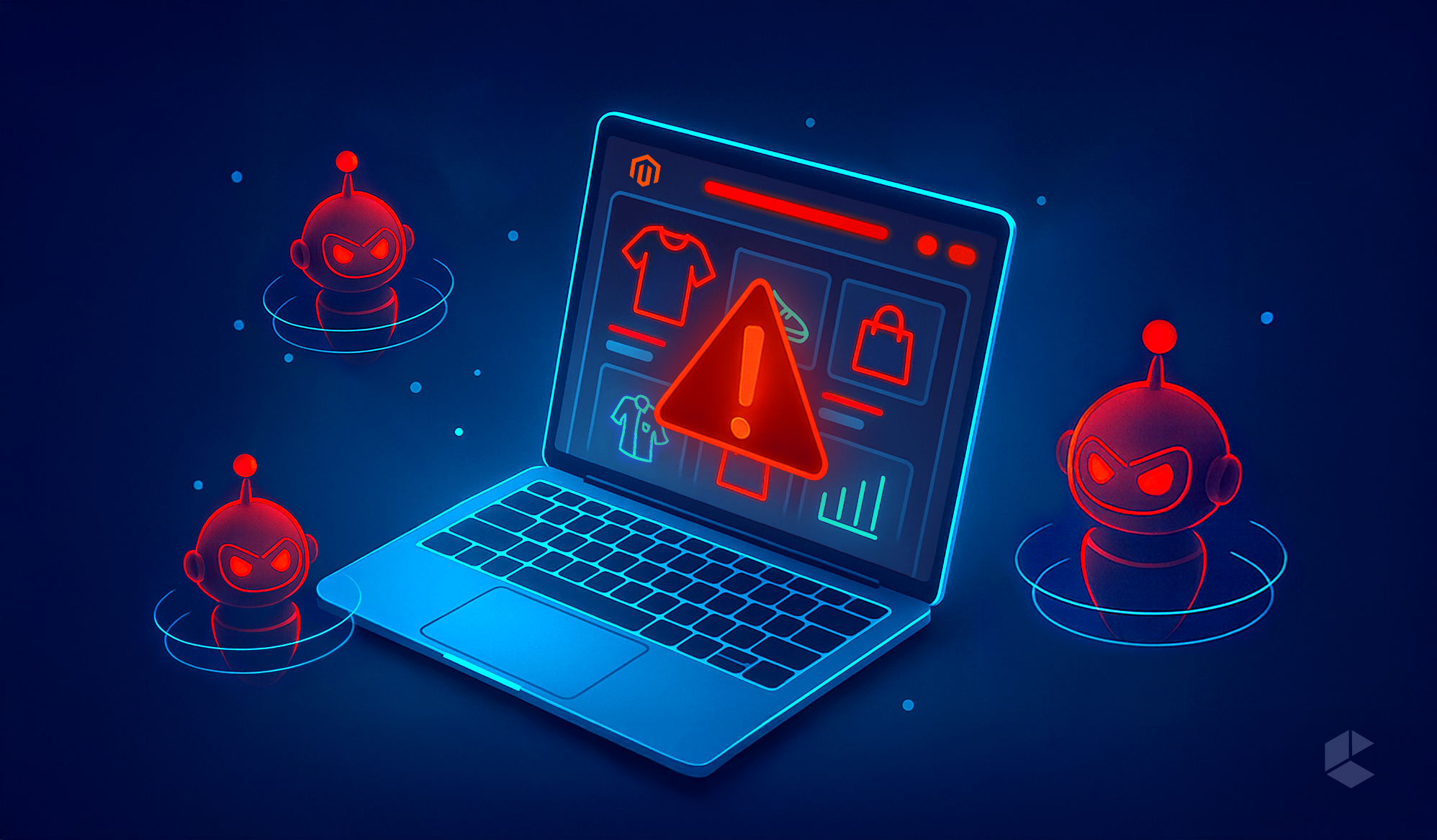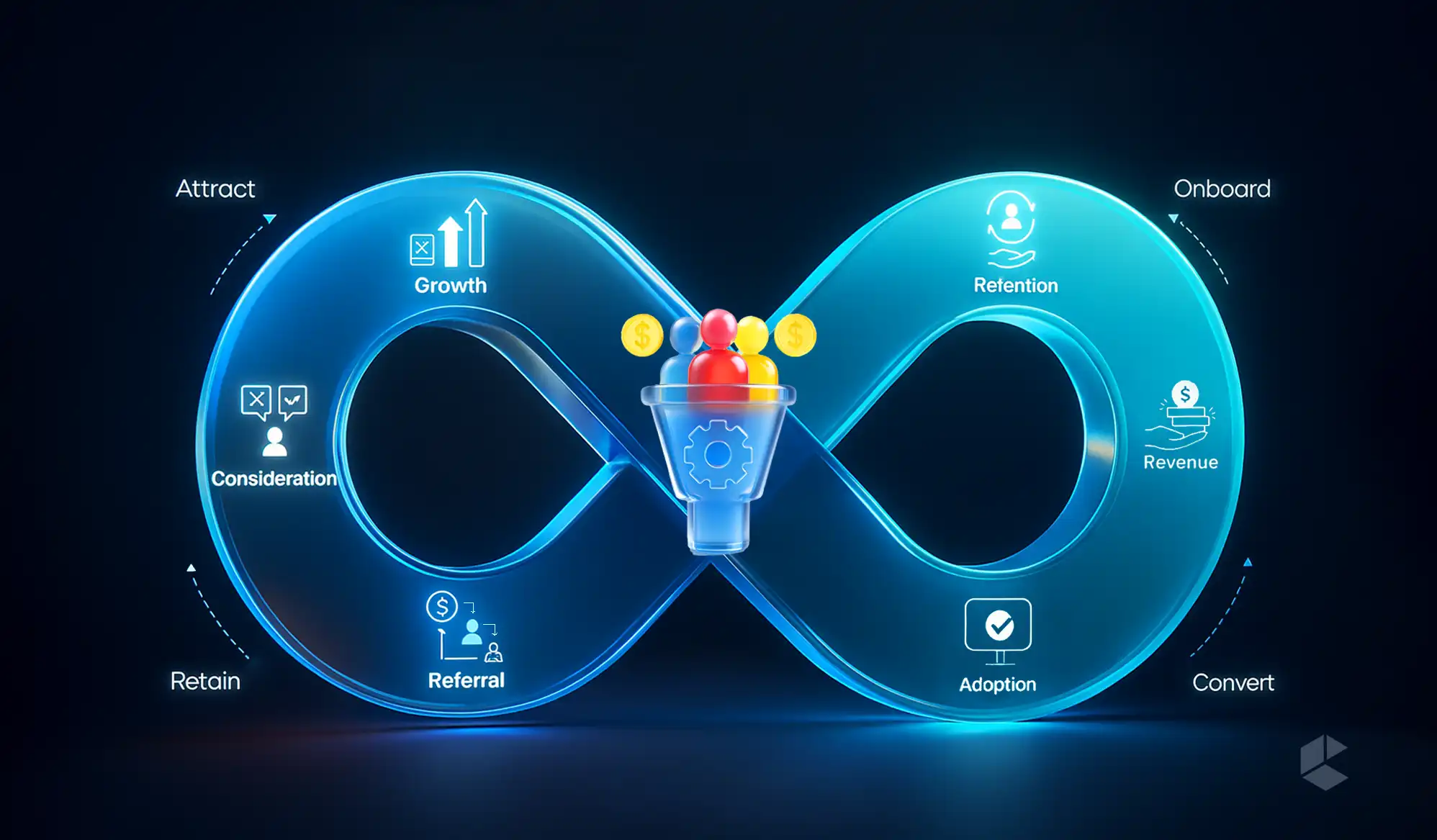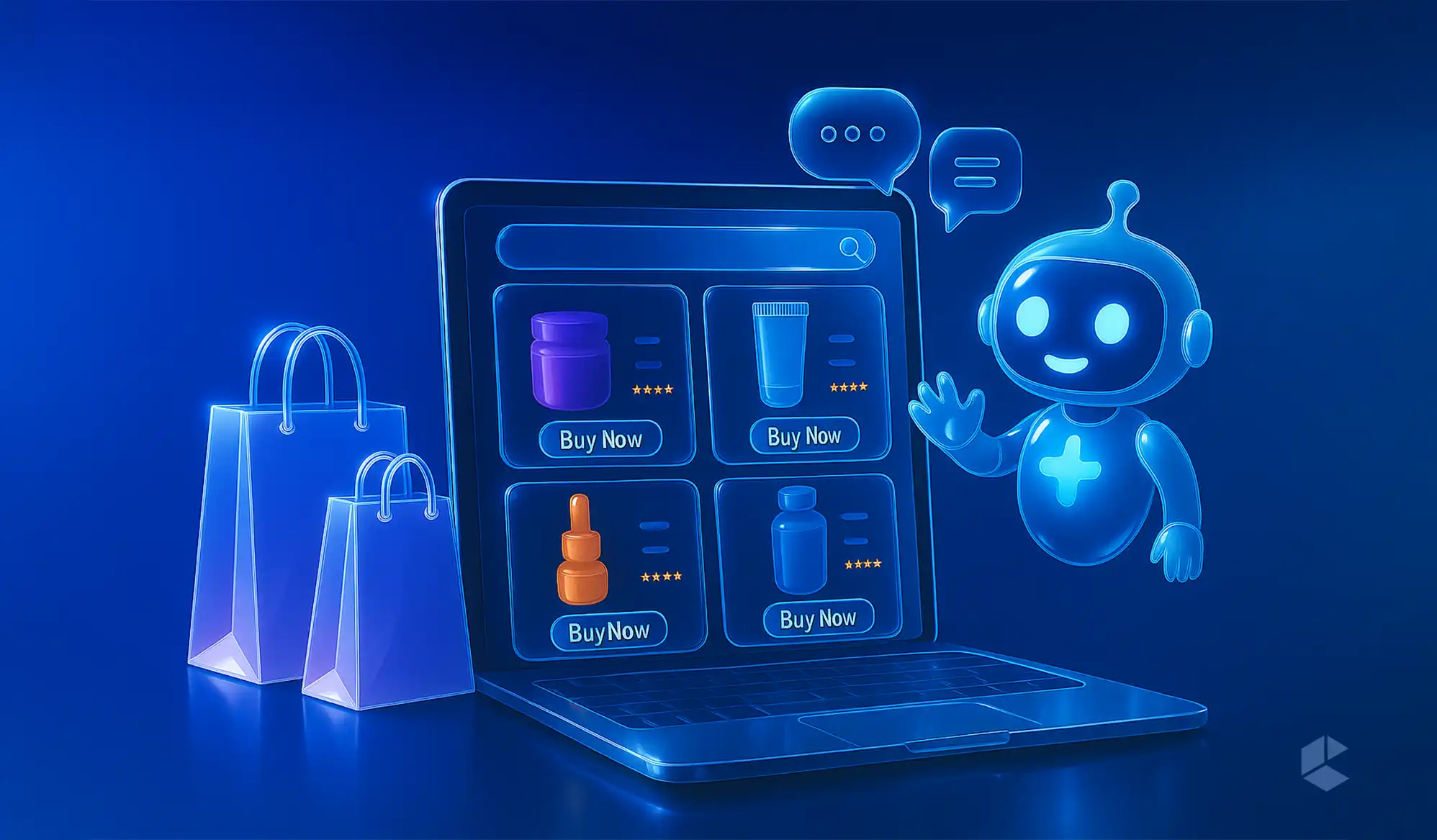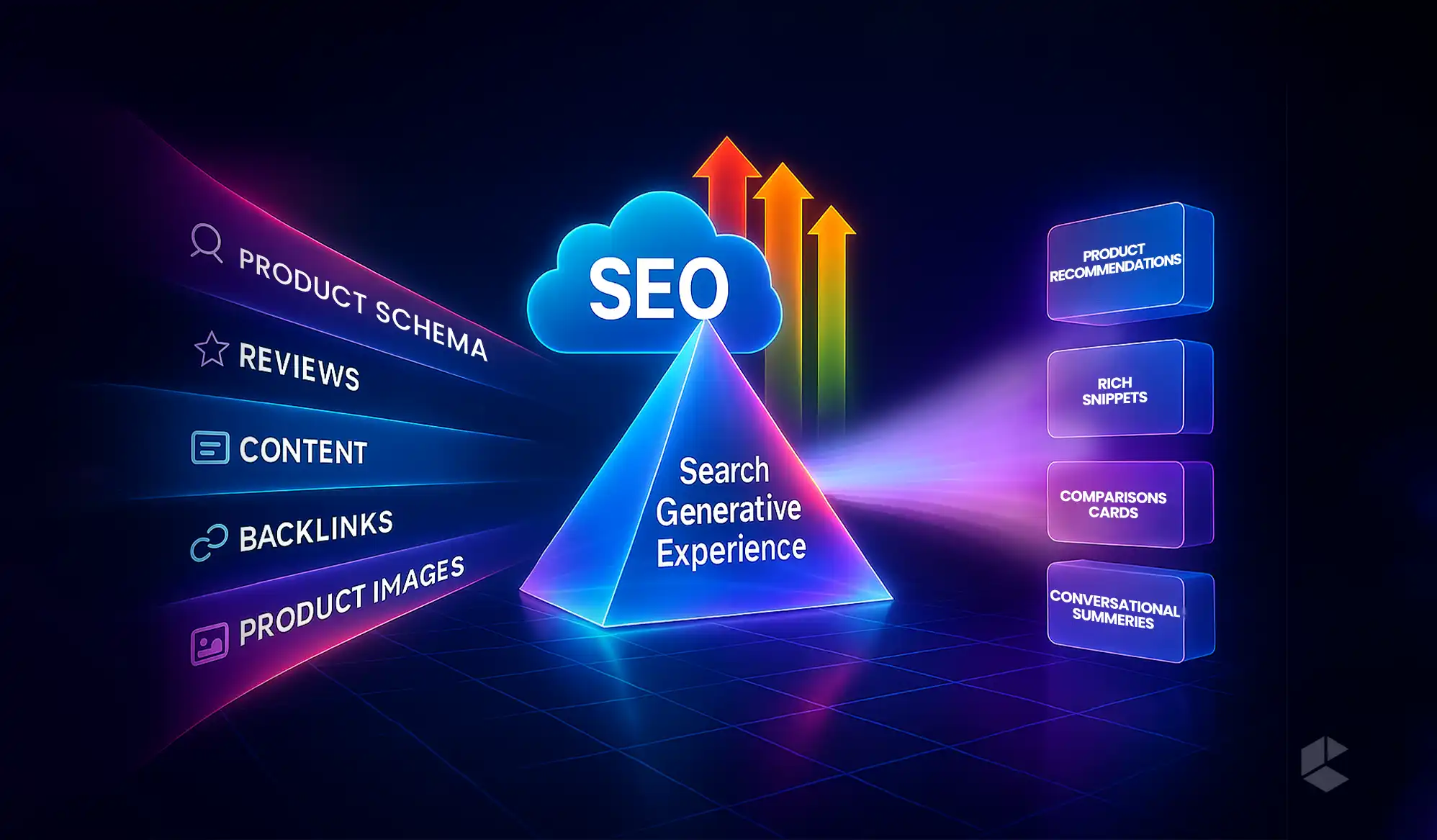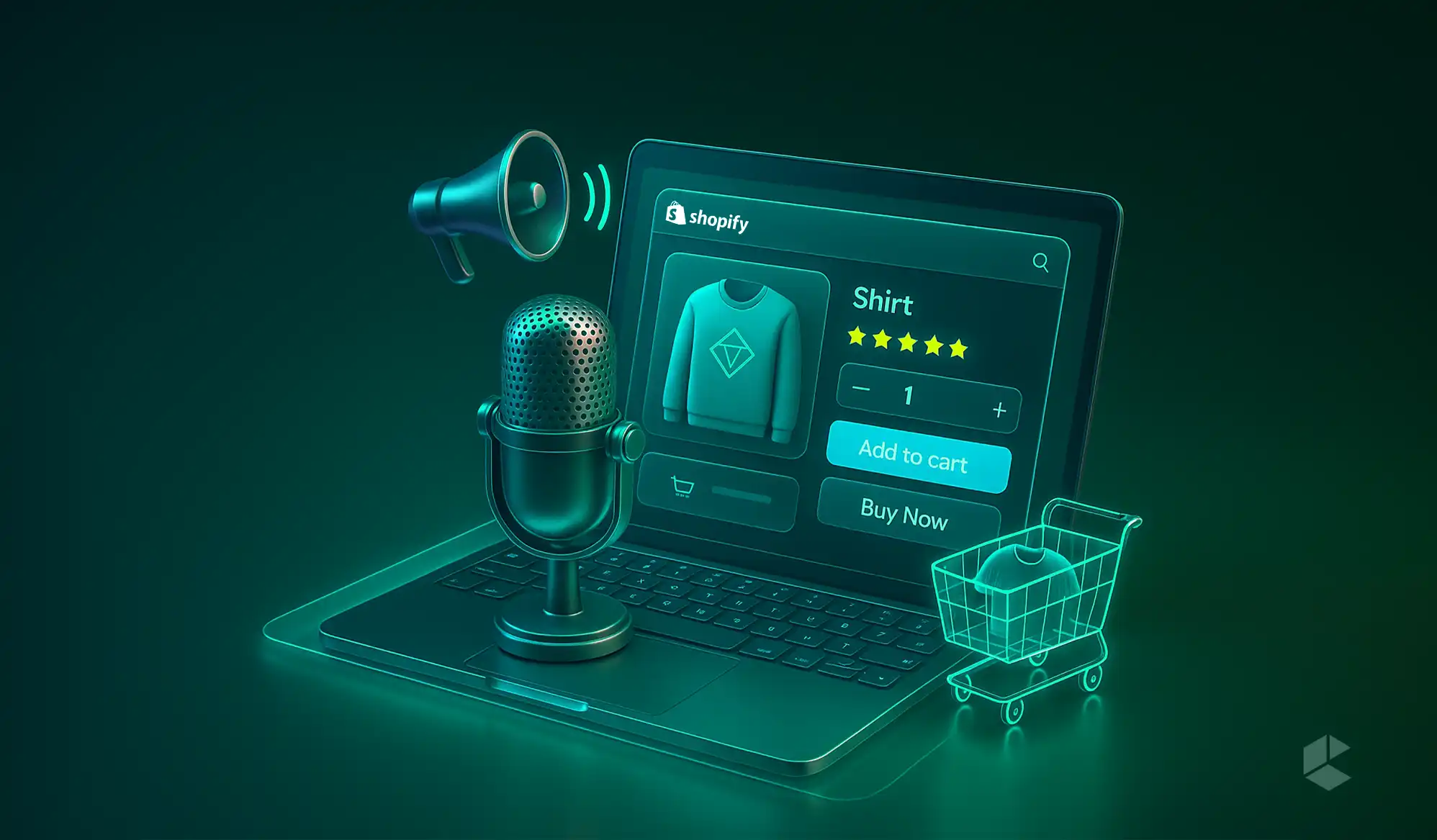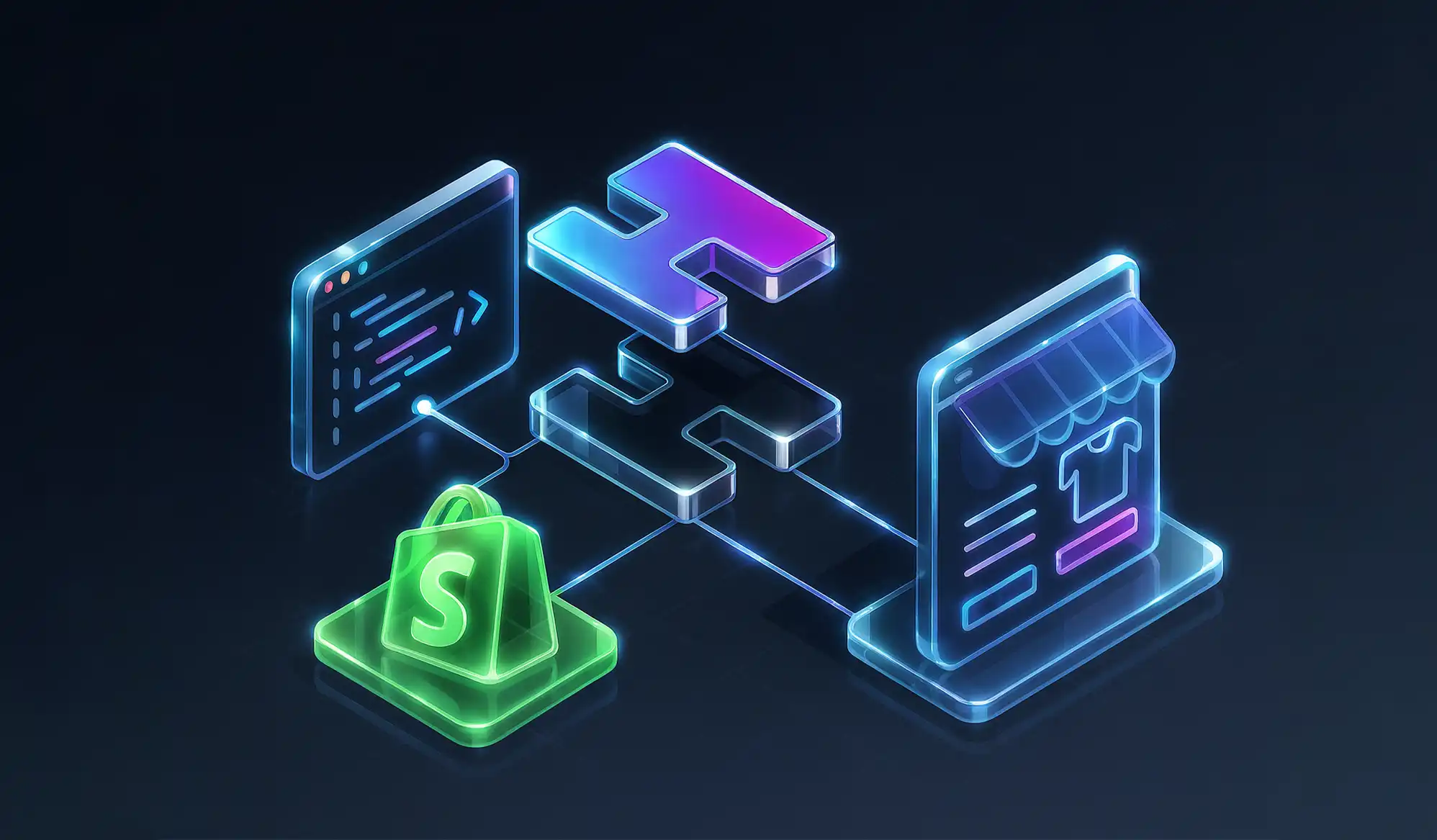- Outdated systems are holding traditional automotive businesses back.
- EVs and DTC models are reshaping customer expectations.
- The aftermarket and personalization segments are ripe for growth.
- Fitment accuracy and data integration are non-negotiable.
- Customer experience and omnichannel consistency drive loyalty.
- Shopify’s flexibility, automation, and B2B capabilities make scaling easier.
Not long ago, the thought of buying a car or even a car part online would’ve sounded absurd. But the road has changed. Digital-first automotive brands and even traditional manufacturers are shifting gears as customers increasingly browse, compare, and buy through screens instead of showrooms.
Whether it’s an entire vehicle or a single gasket, shoppers today expect the same seamless experience they get on mainstream ecommerce platforms, personalized recommendations, transparent pricing, and lightning-fast checkout. And that’s where the challenge lies: automotive ecommerce isn’t just about selling; it’s about building a digital ecosystem that mirrors the precision and reliability of the industry itself.
The market is massive and still accelerating. The global automotive ecommerce industry was valued at around $100.14 billion in 2024 and is projected to reach $343.13 billion by 2032. The opportunity is undeniable, but so is the complexity. Between fitment data, regional regulations, and legacy systems, scaling online takes more than just an online store, it takes strategy, integration, and the right technology stack.
Outdated Systems and the Need for Modernization
Many long-standing automotive businesses find themselves stuck in first gear, not because of a lack of ambition, but because of outdated infrastructure. Dealerships and OEMs often rely on patchwork systems, built decades ago: disconnected inventory databases, custom-coded order tools, and manual catalog updates that can’t keep up with digital demand.
Meanwhile, customers have raced ahead. They want real-time updates, easy part lookup by vehicle model, transparent shipping timelines, and quick payment options. In short, they want the kind of experience Tesla or Polestar already delivers.
The problem? Traditional systems slow innovation down. They make launching new digital features costly and cumbersome. For many businesses, it’s not about deciding if they should modernize, but how to do it without disrupting everything else.
That’s where ecommerce platforms built for scalability and system integration, like Shopify, enter the scene. They offer APIs, ERP connectors, and automation tools that turn clunky, manual processes into efficient digital workflows. It’s not about replacing your operations; it’s about giving them a serious horsepower boost.
How EVs and Direct-to-Consumer Models Are Changing the Game
Electric vehicle manufacturers have redefined the rules of automotive retail. Freed from traditional dealership structures, brands like Tesla, BYD, and Polestar have proven that the direct-to-consumer (DTC) model works, and works spectacularly, when backed by strong digital infrastructure.
These companies have embraced end-to-end online experiences: sleek virtual showrooms, online configurators, even digital financing and over-the-air demos. The entire buying process, from test drive to delivery, can happen without stepping into a dealership.
Legacy OEMs are paying attention. Many are launching hybrid ecommerce models where customers can build and price their vehicles online, then complete transactions through partnered dealers. Others are experimenting with DTC pilots for accessories, EV services, and custom add-ons. These aren’t small experiments, they’re roadmaps for the future.
Take Audi, for example! The brand has blended technology into both its online and offline ecosystems. Virtual reality lets buyers experience 360-degree vehicle tours, while its “Audi City” stores replace large physical inventories with interactive digital screens. Its website configurator syncs with local dealers to process custom orders, and augmented reality tools help customers explore features and servicing steps. It’s a glimpse of how ecommerce and in-person retail can blend into a single, fluid experience.
The Booming Aftermarket Opportunity
While EV manufacturers are redefining how cars are sold, another revolution is brewing in the aftermarket segment, and it’s massive. The global online automotive aftermarket was worth $119.6 billion in 2022 and is projected to grow to $349.7 billion by 2030, clocking an impressive 14.4% CAGR.
This boom is driven by two main forces: the rise of millennial buyers and the culture of customization.
More than 57% of millennials purchased vehicle parts online in 2023. But it’s not just because of price, they’re drawn to convenience, detailed product data, and fitment confidence. They want assurance that a part fits perfectly before hitting “Buy.”
Meanwhile, personalization has become a lifestyle. The car modification market alone was valued at $58.84 billion in 2024, driven by enthusiasts upgrading trucks, SUVs, and off-road vehicles. From performance chips to lift kits, customization is no longer a niche hobby, it’s a mainstream movement.
For ecommerce businesses, this shift presents golden opportunities. Sellers who can deliver accurate compatibility data, bundle recommendations, and easy search filters (like Year-Make-Model lookups) are seeing faster conversions and lower return rates. Platforms like Shopify make it possible to structure catalogs that allow users to filter by vehicle type, compare specs, and even visualize parts using 3D modeling and AR, giving customers the confidence to click “Add to Cart” without hesitation.
Solving Key Challenges in Automotive Ecommerce
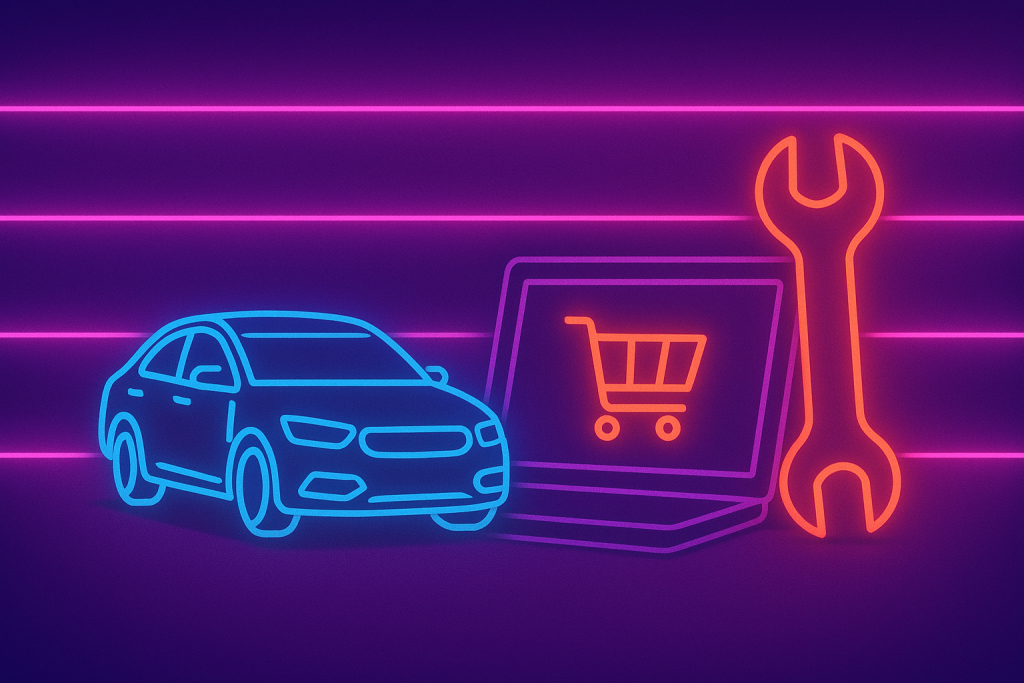
Selling cars and car parts online is exciting, but it’s also not for the faint of heart. The industry comes with unique challenges, from managing fitment data to navigating complex regulations, and solving them is what separates successful online automotive businesses from the rest.
Let’s break down four of the biggest hurdles and how leading brands are overcoming them.
1. Managing Fitment Complexity
When a customer searches for a replacement part or accessory, there’s no room for error. If a part doesn’t fit their specific vehicle, you’ve not only lost a sale but possibly a customer’s trust forever.
That’s why automotive sellers are now adopting industry data standards like ACES (Aftermarket Catalog Exchange Standard) and PIES (Product Information Exchange Standard). These ensure that every listing is accurate, searchable by Year-Make-Model (YMM), and easy to manage at scale.
Platforms like Shopify integrate with apps that support ACES/PIES compliance and advanced filtering systems. Customers can simply select their vehicle type and instantly see compatible options, reducing returns, increasing satisfaction, and saving your support team countless hours of “Does this fit my car?” questions.
2. Navigating Regulatory Challenges for OEMs
If you’re a manufacturer or OEM, selling directly to car buyers isn’t as straightforward as it sounds. Franchise laws and dealer agreements in many regions limit direct sales, forcing OEMs to get creative.
To work around these constraints, many brands now use hybrid ecommerce models, allowing buyers to build, customize, and price vehicles online, while routing final transactions through approved dealers. Some have launched DTC pilot programs for accessories or EV products, where legal frameworks are more flexible.
Shopify supports both of these approaches. OEMs can test new DTC models or digital ordering flows without disrupting existing dealer networks, a smart, gradual approach to modernization.
3. Integrating with Legacy Systems
Let’s be honest, most automotive businesses have an IT setup that’s older than some of their customers. ERP tools, inventory databases, and order management systems often operate in isolation, making data syncing painful.
Shopify solves this by offering robust APIs and partner apps that plug directly into existing systems. This means inventory, pricing, and order data flow seamlessly between your ecommerce site and backend operations. No manual imports. No double entries. Just accurate, real-time information across the board.
This kind of integration isn’t just convenient, it’s transformative. It turns your ecommerce site into the operational hub of your entire business.
4. Building Trust in a Competitive Market
In automotive ecommerce, trust is currency. Customers are buying expensive and often safety-critical products online, so they need to know the seller is credible, secure, and reliable.
The trust-building checklist is simple but powerful:
- Use high-quality photos and detailed product descriptions
- Display verified reviews and installation guides
- Showcase trust badges and SSL certificates
- Offer clear shipping, warranty, and return policies
- Enable secure and fast checkout with tools like Shop Pay
Every small signal adds up to a big impression, and those impressions drive conversions.
Buying Auto Parts from the Aftermarket is Still Scary
Buying the right auto part online shouldn’t feel like a gamble. Even with Year-Make-Model (YMM) filters, mismatches still happen, leading to frustrated customers, costly returns, and broken trust.
The real challenge is data. Managing hundreds of thousands of SKUs across constantly evolving vehicles is tough. Success depends on clean, structured fitment logic that follows ACA standards and connects seamlessly with eCommerce filters.
Without accurate fitment mapping, even the most sophisticated online store risks showing “compatible” products that don’t fit at all, which is where conversions crumble.
ACA: The Backbone of Auto Parts Data
The Auto Care Association (ACA) sets the standards that keep North America’s aftermarket automotive data ecosystem consistent and compatible across platforms.
Here’s how each ACA standard contributes:
- ACES (Aftermarket Catalog Exchange Standard): Maps vehicle fitment based on Year, Make, Model, and Submodel.
- PIES (Product Information Exchange Standard): Describes product details such as attributes, specs, and identifiers.
- VCdb (Vehicle Configuration Database): Stores master vehicle configurations to ensure accuracy.
- PCdb (Product Classification Database): Categorizes parts into structured product families.
- PAdb (Product Attribute Database): Standardizes how attributes are labeled and shared across catalogs.
Together, these frameworks power a reliable eCommerce experience by guaranteeing that every part, description, and fitment aligns perfectly across different marketplaces and websites.
How YMM Filters Actually Work
A YMM filter only works well when powered by structured ACA data. When implemented correctly, YMM filters cut down returns, speed up discovery, and build long-term customer trust.
Here’s how it functions:
- Users select their vehicle once, and instantly view only compatible parts.
- The backend matches selections with ACES and PIES data, replacing guesswork with precise, verified compatibility.
Transforming ACA Data Using PIMcore
ACA files are massive and not ready for direct use in eCommerce platforms. This is where PIMcore (Product Information Management) becomes essential.
Using PIMcore, teams can:
- Import and align ACES, PIES, and VCdb data.
- Map attributes to internal product taxonomies.
- Clean and normalize messy legacy data.
- Link products accurately to vehicle models.
- Sync all of it to eCommerce websites, marketplaces, and even print catalogs.
Why It Matters
Integrating ACA data with PIMcore gives automotive retailers measurable advantages:
- Lower return rates thanks to accurate fitment mapping.
- Faster product discovery for both retail and B2B customers.
- SEO-optimized product listing pages that filter cleanly by YMM.
How to Scale Your Vehicle and Parts Business Online
Now that the obstacles are out of the way, let’s talk about how to actually scale an automotive ecommerce business. From mastering complex data to building customer loyalty, here are the most effective strategies drawn straight from successful automotive brands.
1. Build a Powerful Online Presence
Your website is your digital dealership. It needs to look great, function flawlessly, and make shopping as intuitive as possible.
Use a platform that supports large product catalogs, high-resolution images, and advanced filters so buyers can easily search by fitment, brand, or price. Shopify’s customizable themes and templates allow automotive merchants to design storefronts that reflect their brand identity while keeping navigation simple and conversion-focused.
2. Master Complex Product Data
Automotive catalogs are notoriously large and intricate. That’s why bulk uploads, multi-level product hierarchies, and ERP integrations are must-haves.
Take UroTuning, for example. The company unified product and customer data, added a “Save Your Vehicle” feature, and used Shopify Flow and Scripts to automate compatibility-based promotions and order routing. The result? A 50% increase in sales and over 2, 000 hours saved on manual catalog updates. That’s what happens when data and automation work hand in hand.
3. Deliver an Exceptional Customer Experience
Modern shoppers expect more than just a working website, they want an engaging experience.
Use 3D modeling and augmented reality to help customers visualize parts before purchase. Simplify checkout with Shop Pay, which securely saves customer details for faster repeat orders.
And don’t stop after checkout. Send real-time order confirmations and updates through the Shop App, and automate post-purchase follow-ups with loyalty programs and targeted emails.
Businesses that focus on customer experience don’t just sell more, they build fans who keep coming back. In fact, companies with a customer-first mindset drive 4–8% higher revenue than their competitors.
4. Embrace Unified Commerce
The modern automotive buyer moves between online and offline channels without a second thought. One day they’re browsing accessories on your website, the next they’re visiting your store to see them in person.
To keep up, you need omnichannel integration, a system where every transaction, inventory update, and customer interaction syncs in real time.
Shopify’s omnichannel tools make this seamless, letting businesses offer “Buy Online, Pick Up In Store” options, track inventory across multiple locations, and build customer profiles that store purchase history for personalized recommendations.
5. Expand into B2B Sales
Many automotive merchants overlook the power of wholesale and B2B. With Shopify’s native B2B features, you can offer custom catalogs, tiered pricing, and bulk order automation.
A perfect example is Boost Auto, which scaled from a one-person garage startup to over $1 million in sales within two years using Shopify. They streamlined wholesale fulfillment with ERP integration and maintained ad spend under 1% of revenue, proof that smart automation can power serious growth.
6. Optimize the Post-Purchase Journey
The sale isn’t the end; it’s the beginning of customer loyalty.
Keep buyers in the loop with real-time tracking through the Shop App, offer easy returns and exchanges, and reward repeat customers through loyalty programs or VIP tiers.
When customers feel supported beyond the sale, they come back, not because they have to, but because they want to.
7. Capitalize on Industry Trends
The automotive world is evolving fast. Stay ahead by aligning your offerings with emerging trends:
- Stock EV-specific parts and accessories to meet growing demand
- Offer customizable aftermarket products for personalization enthusiasts
- Expand into online marketplaces while maintaining brand control through tools like Shopify Marketplace Connect
- Integrate sustainable practices, such as core charge systems for reusable auto parts
Adaptability is the real competitive edge in automotive ecommerce.
Why Shopify Is Driving the Automotive Ecommerce Revolution
Shopify has become the go-to platform for automotive sellers because it’s built to handle the industry’s unique complexity. From vast catalogs and fitment data to ERP and warehouse integrations, it eliminates the technical bottlenecks that slow businesses down.
Its app ecosystem covers everything from inventory and shipping management to marketing automation, while Shopify Plus adds enterprise-grade scalability. Combine that with a massive partner network specializing in automotive ecommerce, and you have an engine built for long-term growth.
Real-World Success Stories
The best validation comes from those who’ve already made it happen:
- UroTuning used Shopify Plus to automate order routing and fitment checks, boosting online sales by 50% in six months.
- Boost Auto leveraged Shopify’s B2B tools to transform a basement startup into a multimillion-dollar business with minimal overhead.
- Hoonigan migrated its complex storefronts to Shopify Plus and saw a 30% lift in sales through better personalization and product discovery.
- Speed Engineering improved its product data accuracy across all channels, reducing return rates by 25%.
Each of these success stories shows that scaling automotive ecommerce isn’t about reinventing the wheel, it’s about using the right platform to make the wheel spin faster.
Conclusion
The future of automotive sales is digital, interconnected, and customer-driven. From EV manufacturers to aftermarket retailers, everyone is now part of a race to deliver seamless online experiences that rival physical showrooms.
Shopify gives automotive brands the horsepower they need to navigate that road confidently, bridging legacy systems with modern digital commerce and opening up new lanes for growth, innovation, and customer connection. But beneath that shiny digital surface, accuracy and data consistency are what keep everything running.
Whether your eCommerce business runs on Magento, Shopify, or a custom tech stack, if ACA standards and a PIM system aren’t part of your strategy, your catalog might look polished, but it would fail to convert effectively.
Accurate fitment data isn’t just a backend detail; it’s the difference between a store that sells parts and one that builds customer confidence.
FAQs
Automotive ecommerce involves selling vehicles, parts, and accessories online using digital platforms that manage fitment data, payments, and fulfillment for a seamless buying experience.
You can scale by using ecommerce platforms like Shopify, automating inventory and fitment data, improving personalization, offering omnichannel options, and optimizing post-purchase customer engagement.
Shopify supports complex product catalogs, integrates with ERP systems, automates fitment validation, and offers omnichannel, B2B, and personalization tools built specifically for automotive retailers.
Major challenges include managing fitment accuracy, integrating legacy systems, navigating regulations for OEMs, maintaining trust, and handling vast product data efficiently at scale.
The online aftermarket is booming, projected to reach $349.7 billion by 2030, driven by customization trends, millennial buyers, and faster, more reliable digital shopping experiences.
